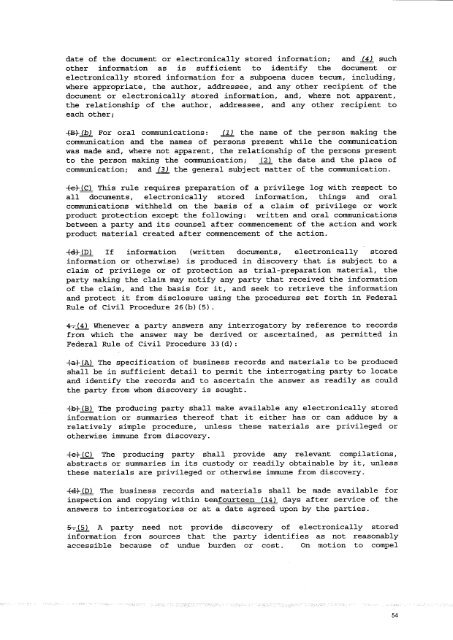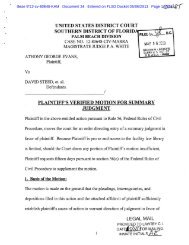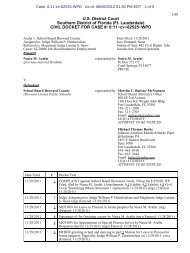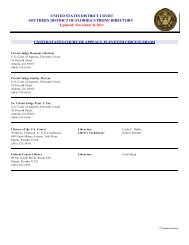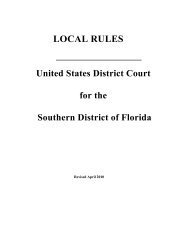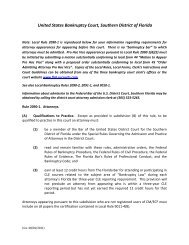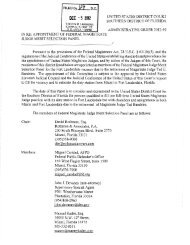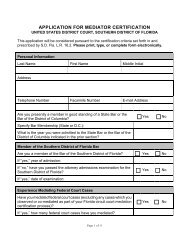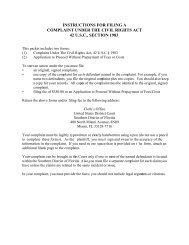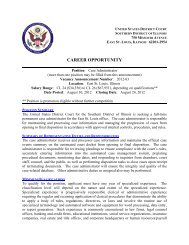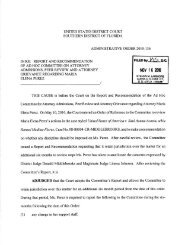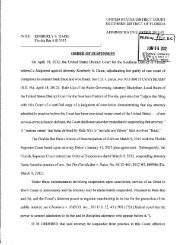JAN j 6 2010 - United States District Court
JAN j 6 2010 - United States District Court
JAN j 6 2010 - United States District Court
You also want an ePaper? Increase the reach of your titles
YUMPU automatically turns print PDFs into web optimized ePapers that Google loves.
date of the document or electronically stored information; and (4) such<br />
other information as is sufficient to identify the document or<br />
electronically stored information for a subpoena duces tecum, including,<br />
where appropriate, the author, addressee, and any other recipient of the<br />
document or electronically stored information, and, where not apparent,<br />
the relationship of the author, addressee, and any other recipient to<br />
each other;<br />
-&±(b) For oral communications: (1) the name of the person making the<br />
communication and the names of persons present while the communication<br />
was made and, where not apparent, the relationship of the persons present<br />
to the person making the communication; (2) the date and the place of<br />
communication; and (3) the general subject matter of the communication.<br />
4ef(C) This rule requires preparation of a privilege log with respect to<br />
all documents, electronically stored information, things and oral<br />
communications withheld on the basis of a claim of privilege or work<br />
product protection except the following: written and oral communications<br />
between a party and its counsel after commencement of the action and work<br />
product material created after commencement of the action.<br />
-feB-(D) If information (written documents, electronically stored<br />
information or otherwise) is produced in discovery that is subject to a<br />
claim of privilege or of protection as trial-preparation material, the<br />
party making the claim may notify any party that received the information<br />
of the claim, and the basis for it, and seek to retrieve the information<br />
and protect it from disclosure using the procedures set forth in Federal<br />
Rule of Civil Procedure 26(b)(5).<br />
4-r(4) Whenever a party answers any interrogatory by reference to records<br />
from which the answer may be derived or ascertained, as permitted in<br />
Federal Rule of Civil Procedure 33(d):<br />
4a4-(A) The specification of business records and materials to be produced<br />
shall be in sufficient detail to permit the interrogating party to locate<br />
and identify the records and to ascertain the answer as readily as could<br />
the party from whom discovery is sought.<br />
-fbf(B) The producing party shall make available any electronically stored<br />
information or summaries thereof that it either has or can adduce by a<br />
relatively simple procedure, unless these materials are privileged or<br />
otherwise immune from discovery.<br />
4eMC) The producing party shall provide any relevant compilations,<br />
abstracts or summaries in its custody or readily obtainable by it, unless<br />
these materials are privileged or otherwise immune from discovery.<br />
(d) (D) The business records and materials shall be made available for<br />
inspection and copying within tcnfourteen (14) days after service of the<br />
answers to interrogatories or at a date agreed upon by the parties.<br />
■5-^(5) A party need not provide discovery of electronically stored<br />
information from sources that the party identifies as not reasonably<br />
accessible because of undue burden or cost. On motion to compel<br />
54


